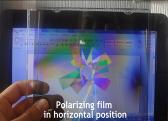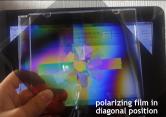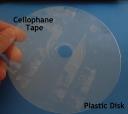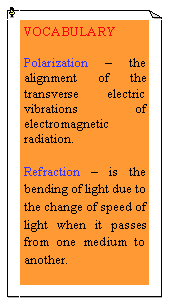
|
MATERIALS: |
|
· Polarizer (2 sheets) · CD Case (with transparent plastic front cover) · Cellophane Tape (Sticky tape) · Laptop (or Computer) |
|
PROCEDURE: |




|
Taking it further: |
|
1. Use other light source such as flashlight in doing the experiment instead of computer. 2. Combine three or more polarizer and experiment on it by rotating each polarizer in different angle. |
|
Art in Polarizer |
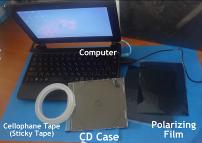
|
1. Open the CD case and remove the clear plastic cover of the CD case. |

|
2. Stick the cellophane tape on the plastic cover of the CD case as shown in the picture or your desired pattern. |
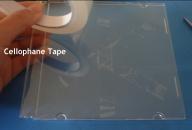
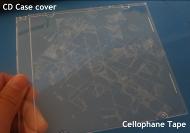
|
3. Place the polarizing sheet on top of the plastic board and hold in front of the computer. See the pattern created. Try to remove the polarizing film, can you see any color? |
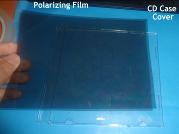
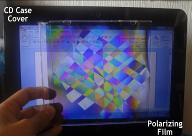
|
4. Rotate the polarizing film and see the difference in colors. (Donft rotate the CD case). |

|
5. Insert the other polarizing film between the computer and the CD case cover in horizontal position. Observe the difference in colors. Try rotating the second film. |

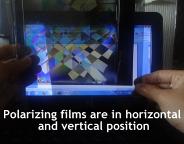
|
6. This time hold the transparent CD cover with the polarizing film on top in any bright place. Can you see any color? Now, hold another polarizing film under the CD case so that they are both in horizontal position. Then try to rotate the second polarizing film until it reaches the vertical position. Is there difference in color? Did you notice the black portion in the polarizing film? |
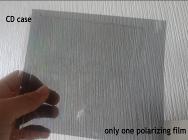
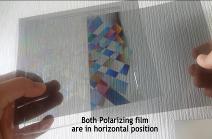
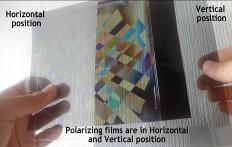
|
ALSO TRY THESE |
